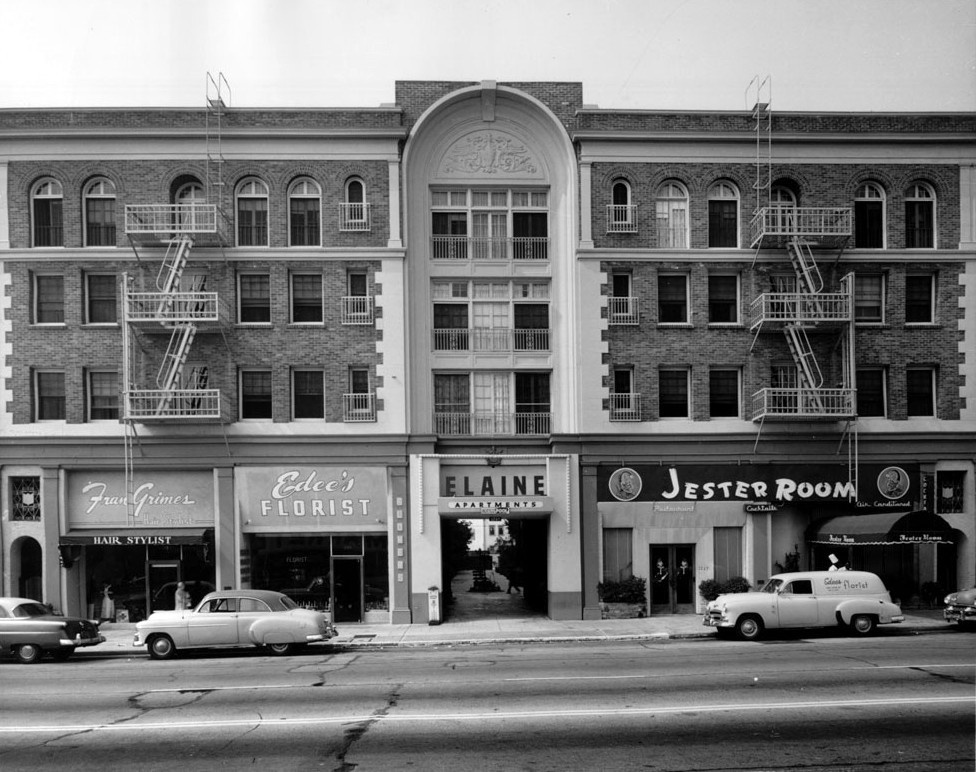A Schoolboy visits Man Ray at the Villa Elaine Apartments

“The second show I saw at Copley Galleries was Man Ray. […] He had moved to Los Angeles in 1940, after living in France for twenty years. He made it out of Paris just before it fell, so he was able to save a lot of his art. In Hollywood he found a place in the Villa Elaine apartment complex on Vine Street, opposite the Hollywood Ranch Market, which was where he met his last wife, Juliet Browner. But, like Copley, he made a tactical error. He assumed that movie people would buy his art. […]
“The Copley Galleries were almost empty the day I went to see the show, and Copley came over to me to discuss the work. We talked a little, and then he said, “You know, Man Ray is living here in Hollywood. He has more work over there on Vine Street, if you’re interested.” I said, “I’m very interested.” Copley called him up and said, “Man, I have a Mr. Walter Hopps here. He is very interested in your art. Are you free? …O.K. He’ll be right over.” He gave me the address, and I went up there and rang the bell. Man Ray came to the door himself, a short man with a sort of pudding-bowl haircut, already turning gray, and big glasses. He stared at me for a minute, and then he said, “You’re not Mr. Hopps, are you?” I said, “Yes, sir.” He said, “Just what do you think you can do for me?” My heart sank. He’d thought a collector was coming over, but he’d opened the door to a schoolboy.”
The Dream Colony: A Life in Art, Walter Hopps, edited by Deborah Treisman from
interviews with Anne Doran (New York: Bloomsbury USA, 2017), 29.